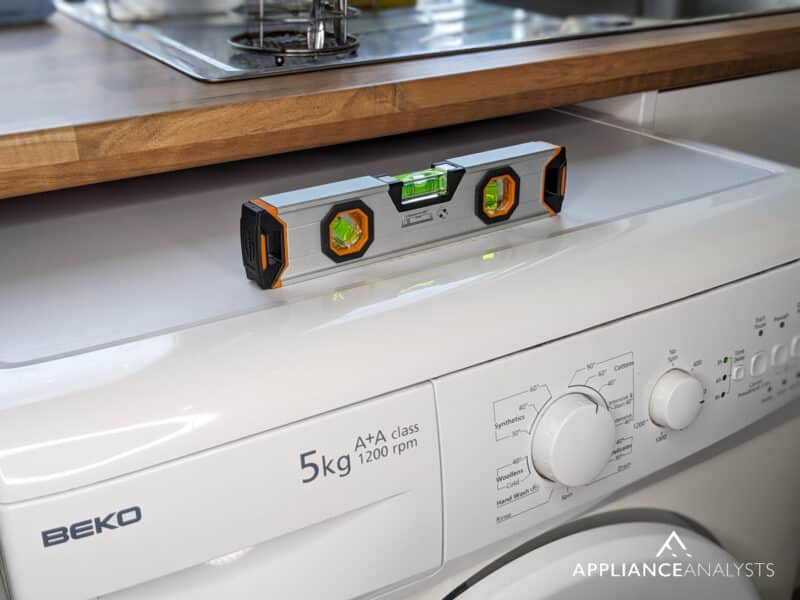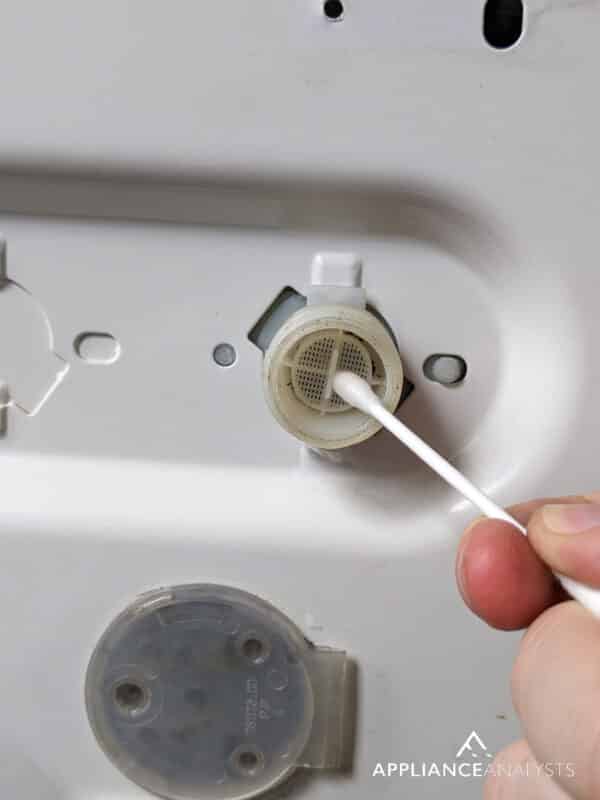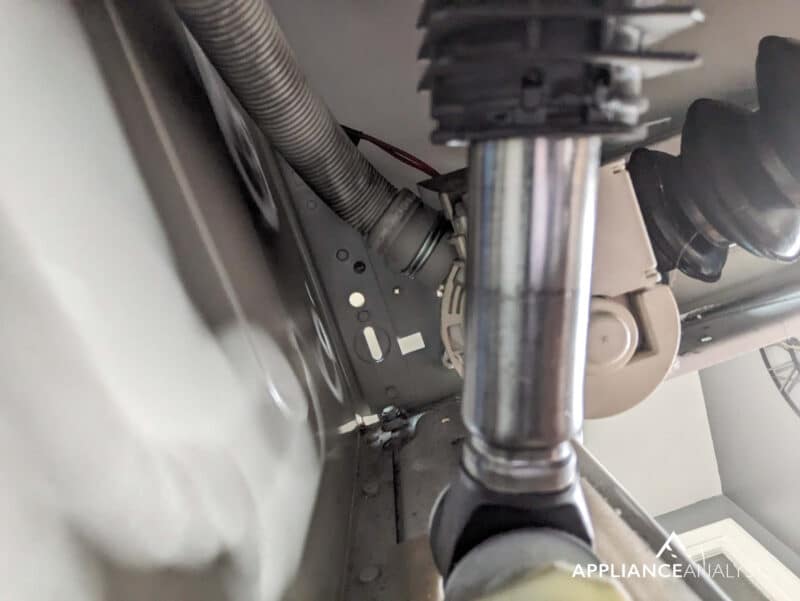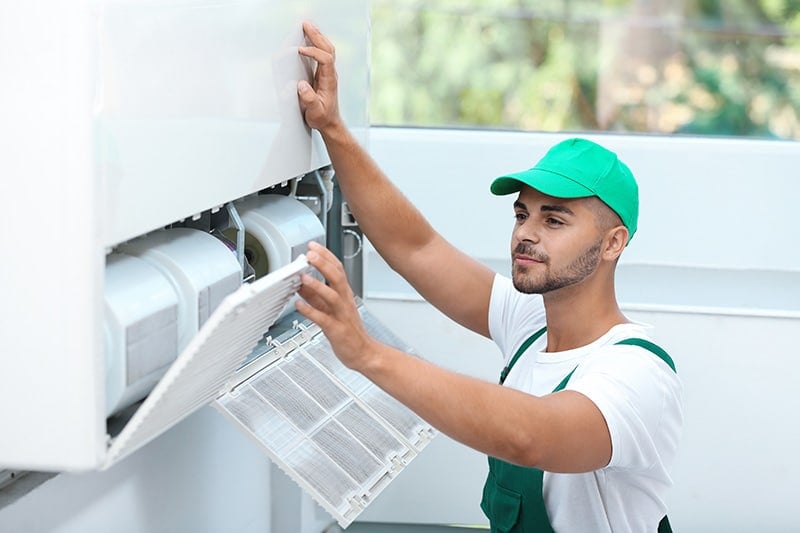We've independently reviewed this article to make sure it's as accurate as we can make it.
To find out more about our article creation and review process, check out our editorial guidelines.
Is your washer not finishing its cycles, and you’re trying to figure out why?
You’ve come to the right place for answers! Washers that struggle to finish cycles affect thousands of people worldwide daily, leaving them confused and annoyed.
I know how inconvenient it can be to be unable to do your laundry when you need to due to your appliance failing. But don’t worry; more often than not, the solution is fairly simple. Below, you’ll find a list including the 4 most common causes behind a washer that doesn’t finish its cycles and 6 simple solutions you can implement to get everything back to normal.
When your washer doesn’t finish its cycles, it can be due to improper leveling, a door lock failure, a switch failure, a water valve issue, and several other causes.
Read on to get your washer to follow through!
Why Your Washer Doesn’t Finish Its Cycles
While there’s no single answer as to why your washer isn’t finishing cycles as it used to, there are typically some common culprits to blame. In my experience, modern washers are miles ahead of their older counterparts. As such, modern washers have advanced technology that can detect issues during the washing cycle and shut down prematurely.
Depending on what the source of the issue is, addressing the cause for premature shutdown might be simple or complex. To get you started, here’s what I recommend you look into first.
#1 Take Notes
The first thing I recommend you do when your washer doesn’t finish its cycles is to take notes of when the cycle stops and anything you can notice during that period.
Observation can go a long way when it comes to pinpointing the source of an issue behind any appliance, so keep a close eye on anything that seems out of the ordinary.
For example, if you notice the cycle stops as soon as the drum starts filling with water, the source of the problem could be a bad door switch.
#2 Ensure Proper Leveling
Improper leveling can also explain why your washer doesn’t finish its cycles – especially if you own a Top-load model.
Top-load model washers are prone to spinning and banging around when they’re not properly positioned on a level surface, which can prompt the appliance to shut down mid-cycle as a safety measure.

Solution: I’ve found that there are many ways to ensure your washing machine is level, but my favorite one is by using what’s known as a spirit level or bubble leveler.
You can place the bubble leveler on top of the washer and see whether the air bubble stays in the center. Also, check underneath the washer to see if all the legs are touching the ground.
Finally, when the washer’s drum is empty, slightly push down on it and see how well the suspension works. From what I’ve seen, when the drum bounces a lot, the suspension can also be to blame for the problem, in which case, you’ll need to call a professional for assessment and repairs.
#3 Check for Error Codes
Error Codes can be a great help when your washer doesn’t finish its cycles, and you’re stuck trying to figure out why.
Modern washer Error Codes are designed to help users determine the source of a problem so it can be addressed as soon as possible.
Some of the most common Error Codes in modern dishwashers are related to issues with the door lock or the switch. When your washer is in the middle of a cycle, it can detect when the door is properly closed and is programmed to stop everything as soon as it senses the door opens.
The door lock mechanism sensor and switch are meant to prevent water from leaking all over your laundry room in case the latch breaks or is not positioned properly. So if either one is failing, your washer can think the door is open, even when it’s not, resulting in it stopping mid-cycle.
Note: There are many Error Codes to consider, but please remember to only follow those listed on your specific washer model’s User Manual, as Error Codes will have different meanings depending on the washer brand and model.
Solution: If you can’t find your User Manual, don’t worry.
You can go online and Google search for “[Your Washer’s Brand and Model] Manual” to find the manual on your manufacturer’s website. Alternatively, you can do a similar Google search but change it to “[Your Washer’s Brand and Model] Error Codes list“.
If you want, you can also refer to our free resource below to make things easier.
Once you know what the specific Error Code you’re getting means, you can further diagnose the issue to find a proper solution.
#4 Check the Water Valve Screens
Another possible reason why your washer doesn’t finish its cycles is that the water inlet valve screens are dirty or blocked.
Your washer draws water from a wall inlet, passes it through its hoses, and into the drum for the laundry cycle. You can encounter many issues if there’s anything wrong with the water supply process.
Solution: My usual advice is to disconnect the washer’s hoses and look closer at the inlet ports behind the unit to find the water valve’s screens. Check for any debris, gunk, or sediment blocking the free flow of water and remove it if there’s any.

If you live in an area with hard water (excessive presence of minerals), limescale can build up rather quickly, so please ensure to clean your filters more often in such a case.
Be careful not to break the filters, as they can be a little delicate. You can use a soft brush and a half water-half vinegar solution to clear the filters.
#5 Inspect the Drainage
Lastly, a common issue that can cause Front-load washers not to finish cycles is a blocked drain line. Once a laundry cycle is completed, the drain line removes water from the drum so that no water leaks into your laundry room when you open the door.
As with the water inlet valve filters, drain line filters can become clogged over time due to limescale, lint, and other objects.

I find that if your washer doesn’t finish its cycles and you notice the water in the drum takes a long time to drain or doesn’t drain at all, a clog is likely the issue.
Solution: Please refer to your User Manual to understand how to remove and clean your drain line’s filter. Front-load washers typically have a hose with a plug that allows for manual draining – you’ll also want to check the plug for clogs.
You can clean the filter with a solution of equal parts water and vinegar and a soft brush to prevent the bristles from piercing or breaking the filter entirely. Once you’re sure the filter is completely clear, check the drain line to ensure it’s blockage-free.
Your washer should now run like clockwork and drain water like a champ.
Getting Your Washing Machine to Finish Cycles
That about sums it up!
When your washer doesn’t finish its cycles, it can be hard to pinpoint the reason behind it, as these appliances are complex and have many parts that could be failing.
Luckily, as I hope this piece has helped you better understand, addressing the most common causes behind a washer not finishing its cycles can be very easy. More often than not, something simple like removing obstructions from the water inlet valve filters and cleaning the drain line will do the trick.
Thanks for reading. If this article was useful and answered your most burning questions, please check out our other resources and free guides below and consider subscribing to our newsletter.
Have a wonderful week.
-Craig.









